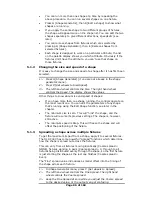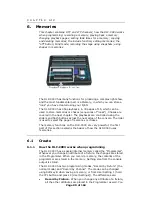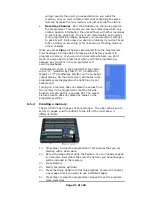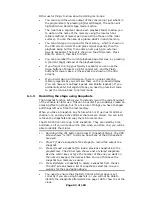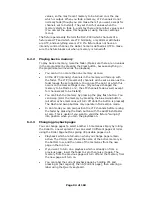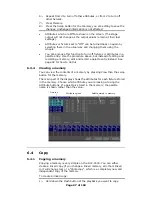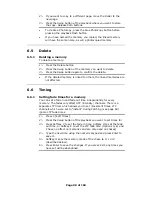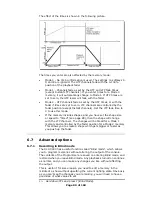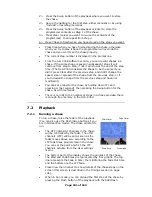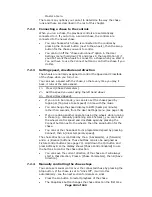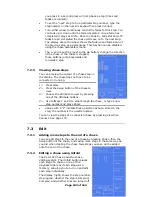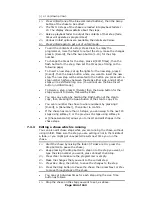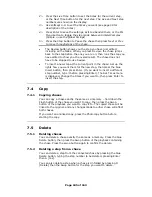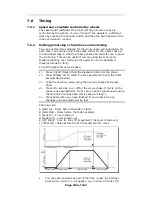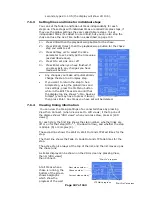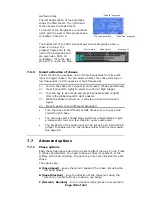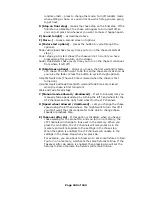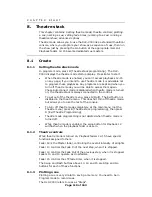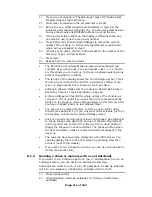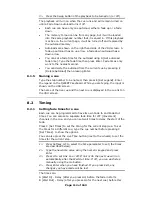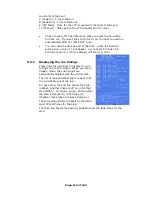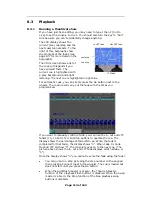
Page 99 of 163
The effect of the times is shown in the following picture.
The times you enter are also affected by the memory mode:
•
Mode 0 - No timing information is used. The settings on softkeys C,
D and E are ignored. The HTP channels fade with the 0-100%
position of the playback fader.
•
Mode 1 - Channels fade as set by the HTP and LTP fade times
(except Instant LTP channels). If you enter times for a Mode 0
memory, it will automatically change to Mode 1. If HTP times are
set to zero, the HTP levels will fade with the fader.
•
Mode 2 - HTP channels fade as set by the HTP times, or with the
fader if times are set to zero. LTP channels are controlled by the
fader position (except Instant channels). Set the LTP fade time to
0 to use this mode.
•
If the memory includes shapes, and you have set the shape size
or speed to “timed” (see page 88), then the shape will change
with the LTP channels. The changes will be timed for a Mode 1
memory and controlled by the fader position for a Mode 2 memory.
This allows you to create a shape which gets bigger or faster as
you push up the fader.
6.7
Advanced options
6.7.1
Recording in Blind mode
The DLC-C003 has a useful function called “Blind mode”, which allows
you to program memories without altering the output of the console.
The contents of the Programmer are saved on entering Blind mode, and
restored when you leave Blind mode. Any playbacks turned on continue
as normal, and you can make any changes you like without affecting
the output.
This is useful if for some reason you need to edit a memory in the
middle of a show without upsetting the current lighting state. Obviously,
as you can’t see the changes you are making, you will need to have a
good idea of what values to set.
1> Hold down YPL and press F [Blind Mode].


